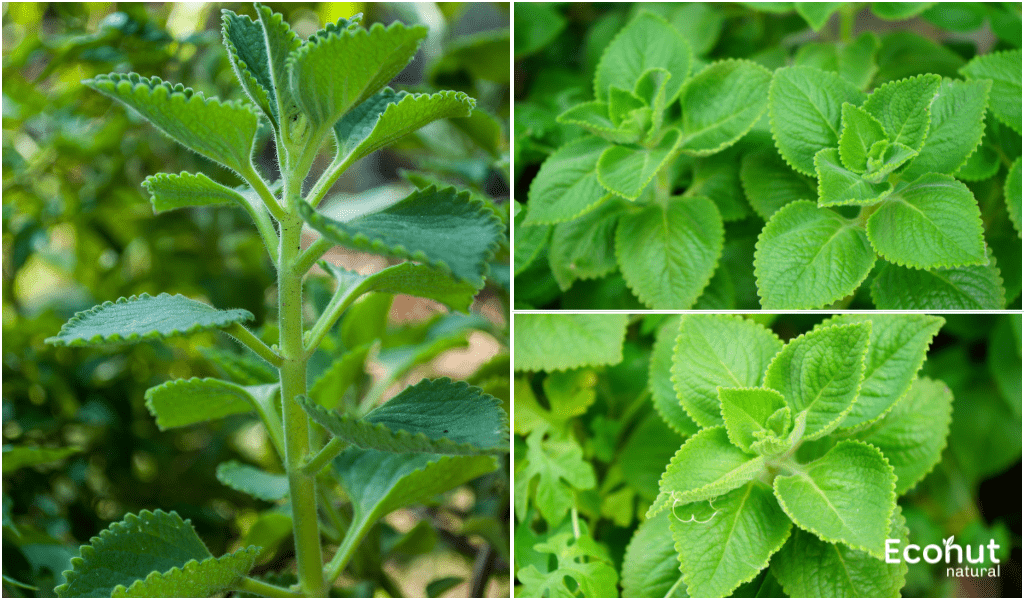Indian borage (Plectranthus amboinicus) is a small, green perennial plant with a scent similar to Cuban oregano. It is also known by the names Mexican Mint, Spanish thyme, and rural borage. Although native to parts of southern and eastern Africa, the demand for this beneficial plant has led to its cultivation spreading to other tropical regions of the world with suitable growing conditions.
The plant is known scientifically as Plectranthus amboinicus, and it is a very hardy kind that grows quickly, requires little water, and can even thrive in frigid areas.
The succulent plant Plectranthus amblycinicus grows quickly and has several culinary and medicinal uses. Very aromatic Also referred to as Indian Borage
Description
A perennial herbaceous plant in the mint family Lamiaceae is Indian borage. Its other common name, Cuban oregano, comes from the strong oregano scent it exudes when crushed. Plant growth occurs primarily in the spring and summer months.
Botanical Name:
Plectranthus amboinicus
Family:
Lamiaceae
Leaves:
Simple, oppositely arranged, fleshy, thick, and light green leaves that are 2.5–3 cm long and wide. The leaves have a broadly ovate or triangular form, with a broadly sharp apex and a truncate leaf base. Leaf margins are rounded. The lower surface appears icy due to the large number of glandular hairs.
Stems:
Its stems are thick and square
Flowers:
Small, insignificant flowers
Fruits:
The fruits are smooth, light brown nutlets.
Habitat:
Plectranthus ambionicus, also known as borage in English, is a member of the Lamiaceae family. It naturally exists in warm, tropical areas of Africa, Asia, and Australia.
Parts Used:
Leaf, Stem
Dosage:
It is advised to take 5–10 ml of juice internally.
Indian Borage (Plectranthus amboinicus)
Coleus amboinicus / Coleus aromaticus
Chemical Constituents:
Thymol, γ-Terpinene, p-Cymene, (E)-Caryophyllene, Caryophyllene oxide, Essential oil
Common Name
Vick’s Plant; Spanish Thyme; Soup Mint; Mexican Mint; Indian Mint; Indian Borage; French Thyme; Cuban Oregano; County Borage; Caribbean Oregano
Other Language Names of Indian Borage (Plectranthus amboinicus)
Sanskrit name – Gandhapushpika, Parnayavani, Ashmari Bheda
Hindi name – Gandhewal, Patharchur, Patta
Marathu name – Vajrani
Bengali name – Patharchur, Pashan bhed
Gujarati name – Ovapan
Kannada – Doddapatre, Sambranisoppu
Tamil name – Karpoorvalli, Kurputvallai
Talugu name – Karuvacruvallai, Sugandavallekam
Malayalam – Panikoorka
Scientific Classification
| Kingdom | Plantae |
| Subkingdom | Tracheobionta( Vascular plants) |
| Superdivision | Spermatophyta (Seed Plants) |
| Division | Magnoliophyta (Flowering plants) |
| Class | Lamiales (Mint order) |
| Family | Lamiaceae |
Ayurvedic Properties
Taste (Rasa) – Pungent (Katu) and Bitter ( Tikt)
Qualities – Light to digest ( Laghu), dry (ruksha) and strong (tikshana)
Vipaka – Katu which means it undergoes pungent taste conversion after digestion.
Potency – Hot (Ushna)
Effect on Tridosha – Balances Kapha and Vata dosha.
Indian Borage (Plectranthus amboinicus) Uses
- The dried leaves can be crushed up and used as an herb in soups, stews, and other meals. They are great for adding flavor to meat and vegetable dishes.
- Leaves can be used to extract essential oils, these are usually used whole or powdered, and they can have some effects when eaten or applied topically.
- Luke warm leaf juice combined with honey is used to treat children’s fever and related issues.
- To get rid of worms, consume 6–10 grams of leaf paste mixed with lukewarm water at night.
- Cholera is treated with heated water infused with nutmeg, clove, and this leaf.
- For newborn baths, medicated water made with its leaf is used. It keeps newborns from getting colds and coughs.
Indian Borage (Plectranthus amboinicus) Benefits
Relief from Respiratory Issues:
Indian borage leaves can be chewed on or used to make tea to treat stuffy noses, sore throats, and coughs. The components of the herb work as a potent expectorant, clearing your sinuses and clearing your respiratory tracts of mucus and phlegm.
Skin Health:
Indian borage has the anti-inflammatory properties that can rapidly reduce redness and swelling while also getting rid of itching and irritation, making it an excellent treatment for anything from bug bites and stings to eczema and psoriasis.
Packed with Vitamins A and C:
Indian borage have a little sedative effect is one of its less well-known characteristics. It has been used in folk medicine as an herbal remedy for people with excessive anxiety or ongoing tension, especially in the form of tea, which helps to foster calmness, relaxation, and restful sleep.
Cancer Prevention:
Indian borage’s (Plectranthus amboinicus) antioxidant properties and omega-6 gamma-linoleic acids can effectively slow the progression of breast cancer. Studies are also being conducted on the herb’s impact on prostatitis, which is one of the early signs of prostate cancer.
Relieves Fever:
Fever, one of the most common symptoms of the flu or a cold, is another condition for which Indian Borage is utilized. Indian Borage is a sudorific plant; sweating draws impurities from the skin and speeds up the healing process. It is also used for a variety of sensory issues.
Stress and Anxiety:
One of the less well-known advantages of Indian borage is that some of the organic compounds and minerals in the herb have been demonstrated to have mild sedative properties. For this reason, people with high anxiety or chronic stress are frequently recommended to use this herbal remedy, especially in the form of tea, to promote relaxation, peace of mind, and sound, restful sleep.
Irritable Bowel Syndrome:
Indian borage was traditionally used to control digestion and reduce stomach inflammation, which helped to quiet troubled stomachs and ease irritable bowel syndrome. The best method to gain from this health benefit is to make tea from Indian borage leaves.
Also Read: Vacha, Sweet flag (Acorus Calamus)- Uses, Benefits and Side Effects
Indian Borage (Plectranthus amboinicus) Side Effects
Pyrrolizidine Alkaloids (PAs):
There could be traces of PAs in Indian Borage. When used repeatedly or in large quantities, these may be detrimental to the liver.
Mint Family Interactions:
Because of its familial connection, Indian Borage, like other mints, may interact with several drugs, particularly blood thinners.
Conclusion
Plectranthus amboinicus has been known for its antibacterial properties since antiquity. Research has demonstrated the effectiveness of the herb’s leaf decoction in treating bacterial tuberculosis and chronic cough. The leaves prevent the growth of pathogens including Salmonella typhimurium and Escherichia coli.
FAQS
What is Indian borage known by in botanical terms?
Plectranthus amboinicus
What is the purpose of Plectranthus amboinicus?
Herbal remedies containing Plectranthus amboinicus have been used to treat a range of conditions, including eczema, asthma, the flu, and cardiovascular issues.
What is Plectranthus amboinicus called in Bengali?
Patharchur, Pashan bhed
Is Indian borage a herb used for medicine?
Within the Lamiaceae family, Indian Borage (Plectranthus amboinicus) is the most accessible and easily grown medicinal plant. Other common names for this plant are Mexican mint, Mexican thyme, pathachur, oregano, Spanish thyme, and oregano brujo (Puerto Rico).
How is borage flowers used?
They have a somewhat salty, cucumbery flavor. A pretty garnish for salads, sandwiches, and cool drinks is fresh borage flowers.
How is borage prepared for consumption?
Its edible leaves, blossoms, and stalks have a mildly cucumber-like flavor. Borage leaves pair well with shellfish, yoghurt or cream cheese mixes, and salads. To obtain a beautiful set, you need let the pose set for at least 4 hours, ideally overnight.

